
How to Send JSON Data in Postman
We will delve into the topic of sending JSON data using Postman, a powerful tool for API testing and development. Whether you're a seasoned developer or a newbie, mastering this skill is essential for efficient API testing and development.

How to Call JSON RPC API (3 Best Ways)
Calling JSON-RPC APIs is a fundamental aspect of modern web development. In this blog, we will explore two of the best methods to call JSON-RPC APIs, providing developers with insights into making seamless and effective API calls.
How secure is Claude Code when processing proprietary code?
Claude Code, powered by advanced AI, is rapidly changing how developers write, analyze, and debug code. But when it comes to proprietary code, security becomes paramount. How can you ensure your valuable intellectual property remains protected while leveraging the power of AI? This article dives deep into Claude Code's security

11 Best API Documentation Tools for 2025
Effective API documentation is crucial for developers and users to understand, adopt, and implement APIs successfully. This overview highlights seven top API documentation tools in 2024, each offering unique features to streamline the documentation process.

How to Fix 401 Unauthorized Error
The 401 Unauthorized error is an HTTP status code that signifies a failure in the authentication process. This error occurs when the server receives a request without valid authentication credentials, or the credentials provided are incorrect or insufficient.

How to Fix "Status Code 407 Proxy Authentication Required" Error
The HTTP 407 error, known as "Proxy Authentication Required," is an HTTP status code indicating a client must authenticate with a proxy server before accessing the requested resource.

The Ultimate Guide to Understanding API Status Codes
An API status code is a three-digit number sent from the server in response to a request made to an API. These codes are a standard part of the HTTP protocol and are used to indicate whether the request was successful, encountered an error, or requires further action.

Walmart API | How to Use Walmart API?
The Walmart API is a powerful tool that enables developers to interact with one of the largest retail giants in the world. The API provides access to a variety of functionalities, including product searches, inventory management, and order processing.

API Observability: Pillars, Benefits & Use Cases
API observability is the practice of monitoring and understanding the internal state of your APIs. Observability involves collecting and analyzing data from various sources, such as logs, metrics, and traces, to comprehensively view your API's behavior.

How to Install Postman on Ubuntu Using Snap/Flathub
Are you looking to install Postman on Ubuntu? This guide will walk you through the steps to install Postman on Ubuntu using two popular methods: Snap and Flathub.

Test Scenario vs Test Case: the Key Differences
When it comes to software testing, the terms test scenario and test case are often used interchangeably. This post will explore the key differences between a test scenario and a test case.

API Payload: Definition, Importance, Types and Best Practices
APIs are vital for modern web development, enabling communication between software applications. This article delves into API payloads, their importance, types, and best practices for handling them.

How to Add Bearer Token Authorization in Postman
In Postman, you can use a Bearer Token for authorization by including it in the "Authorization" header of your HTTP request.

React Fetch vs Axios: Comparing HTTP Request Libraries in React
Fetch is a native JS interface for HTTP requests supported by modern browsers. Axios is a more full-featured third-party library requiring installation. Axios provides richer features like automatic JSON parsing, error handling, interceptors.

12 Best UI Automation Testing Tools
In this article, we will explore the significance of the 12 best UI automation testing tools, their features, and the benefits they bring.

How to Call the Twitter API with Python
Twitter, one of the leading social media platforms, provides a powerful API that allows developers to access a wealth of information.
In this comprehensive guide, we'll walk you through the step-by-step process of calling the Twitter API using Python.

Why Programmers Hate Writing API Documentation and How to Solve It?
API documentation is crucial in software development but often faces reluctance from programmers due to various challenges. Apidog, an all-in-one API development tool, integrates essential functionalities for API documentation to solve this problem,.

Curl -o Command in Linux
Curl is a linchpin for transferring data between local and remote systems. This post will provide a concise exploration of the "curl -o" command in Linux.

Test Cases for API Testing with Example
As APIs grow in usage and complexity, properly testing them is crucial for delivering high-quality applications. This article will explore API testing and provide examples of effective API test cases.

Socket. IO vs. WebSocket: Keys Differences
Two popular technologies that facilitate real-time communication are Socket.IO and WebSocket. In this article, we'll dive deep into Socket.IO and WebSocket, exploring their key differences, use cases, and advantages.

How to Send POST XML with Postman
In this article, we will explore the process of sending POST requests with XML data using Postman. We'll walk you through the steps to effectively send XML data to a web service or API, making it simple and easy to work with this common data format.

Postman vs Swagger: The Key Differences You Should Know
This article explores the key features and limitations of Postman and Swagger and recommends why Apidog is the superior API documentation tool.

Postman Tutorial: How to Use Postman Online for API Testing
This post will explore the convenience of the Postman Online Version and learn how to test API using it step by step.
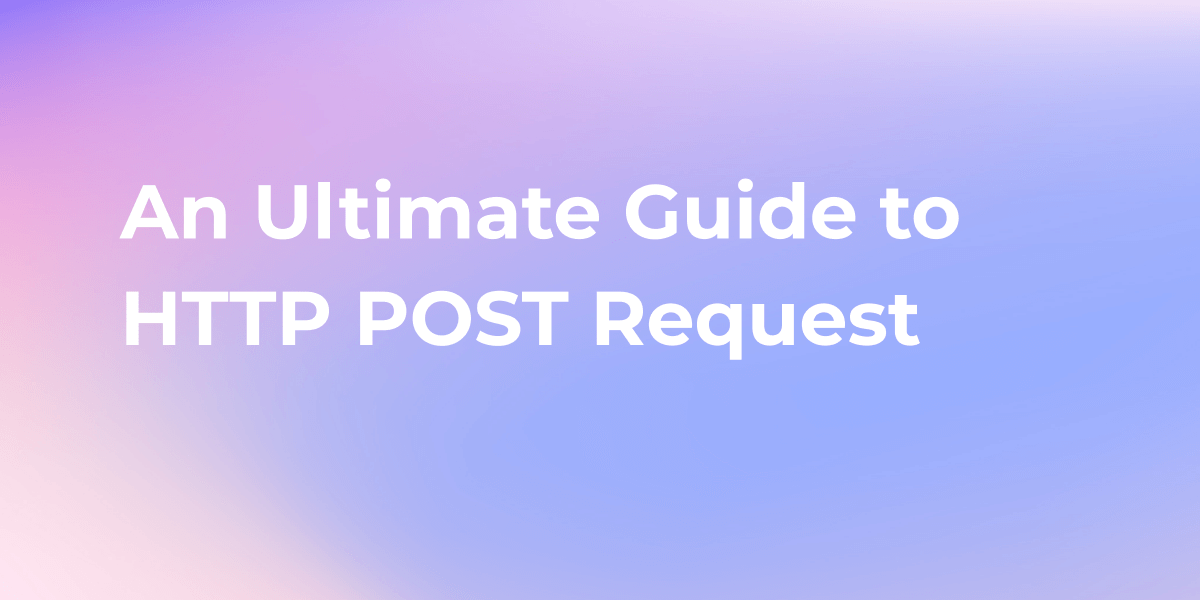
An Ultimate Guide to HTTP POST Request Method
In a POST request, data is sent within the request body, allowing for the transmission of information such as form submissions, file uploads, or API interactions.

API Performance Testing: A Complete Guide
This post will explore the concept of API performance testing, different types of API performance testing, and effective tools to perform it.

What is Swagger | Swagger Tutorial for Beginners
Swagger is an open-source API design and documentation tool that helps developers design, build, document, and test RESTful APIs faster and more easily.

HTTP DELETE Request with Body
The HTTP specification explicitly states that the DELETE method does not expect a request body. While other HTTP methods like POST and PUT often include a request body to send data to the server, the DELETE method is intended solely for resource deletion.

How to Call REST API with cURL
cURL is a useful command-line tool for calling REST APIs directly from your terminal or in scripts and automation. In this guide, we'll cover the basics of using cURL to call with REST APIs.
What is a cURL API Call?

11 Best Open-Source API Documentation Tools
Explore the power of open-source API documentation generators.
From Swagger to Apidog, these API documentation generators are tools that automatically generate documentation for API.

How to Convert XML Schema(XSD) to JSON Schema
XML Schema is used to define the structure and data types of XML documents, while JSON Schema is used to define the structure and validation of JSON data.

How to Convert XML to JSON: A Step-by-Step Guide
Converting XML (eXtensible Markup Language) to JSON (JavaScript Object Notation) is a common task in web development and data interchange.

How to Get Streaming Requests with Axios (2 Best Ways)
Axios is a popular HTTP client library for making requests in JavaScript. It provides two effective methods to implement streaming requests and continuously gets server responses. Check it now.

SSL Certificate - Signature Verification Failure Vulnerability
The SSL certificate signature verification failed vulnerability refers to a security issue where the digital signature of an SSL certificate cannot be successfully verified.

How to Use Curl -v Command, A Complete Guide
curl is a powerful command-line tool for HTTP requests, supporting various protocols. The -v option activates verbose mode, revealing detailed communication logs between the client and server.

What is cURL Command and How Does it Work?
What is cURL in API?
"Curl" stands for "Client for URLs" and is a command-line tool and library for transferring data with URLs. It is widely used for making HTTP requests to interact with web APIs.

WebSocket Tutorial: Test WebSocket Connection Using Curl
In this section, we will explore how to use curl, a command-line tool for making HTTP requests, to establish a WebSocket connection, and communicate with a WebSocket server.

Top 10 Online API Testing Tools | Test APIs Online
To help you make the best choice for your API testing needs, we've compiled a list of the top 10 online API testing tools. These tools are not only powerful but also cost-effective, making them ideal for both small startups and large enterprises.

How to Send gRPC Request with Postman
gRPC is a high-performance, open-source remote procedure call (RPC) framework that supports multiple programming languages. This article will guide you on how to send gRPC requests in Postman.

What is Form-Data Content-Type
Form-data is one of the formats for data sent from a web form. Specifically, it encodes values entered into a form as name-value pairs and sends them with the Content-Type header set to multipart/form-data.

What Are API Cookies? How to Send it?
If you've ever wondered what API cookies are and how to send and manage them effectively, you're in the right place. In this comprehensive guide, we will delve into the world of API cookies, exploring their definition, and purpose.

How to Import JSON Files into Postman
Now, let's see how Apidog and Postman handle importing JSON files to find the best fit for your needs.
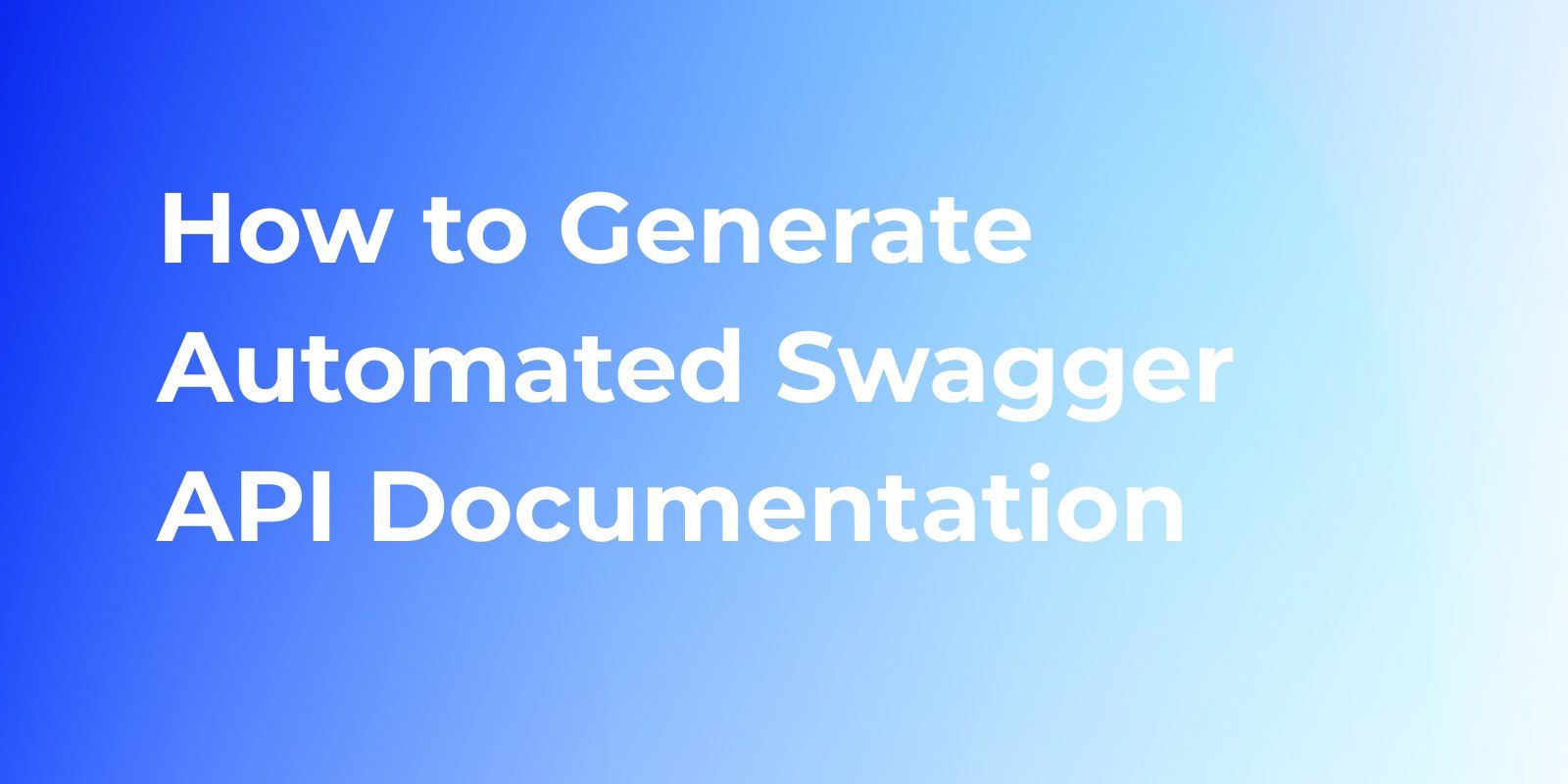
How to Generate API Documentation from Swagger Automatically
In this post, we will provide you with a comprehensive guide on how to generate Swagger documentation for your API. Additionally, we will introduce a valuable tool called Apidog that can help streamline the documentation process.
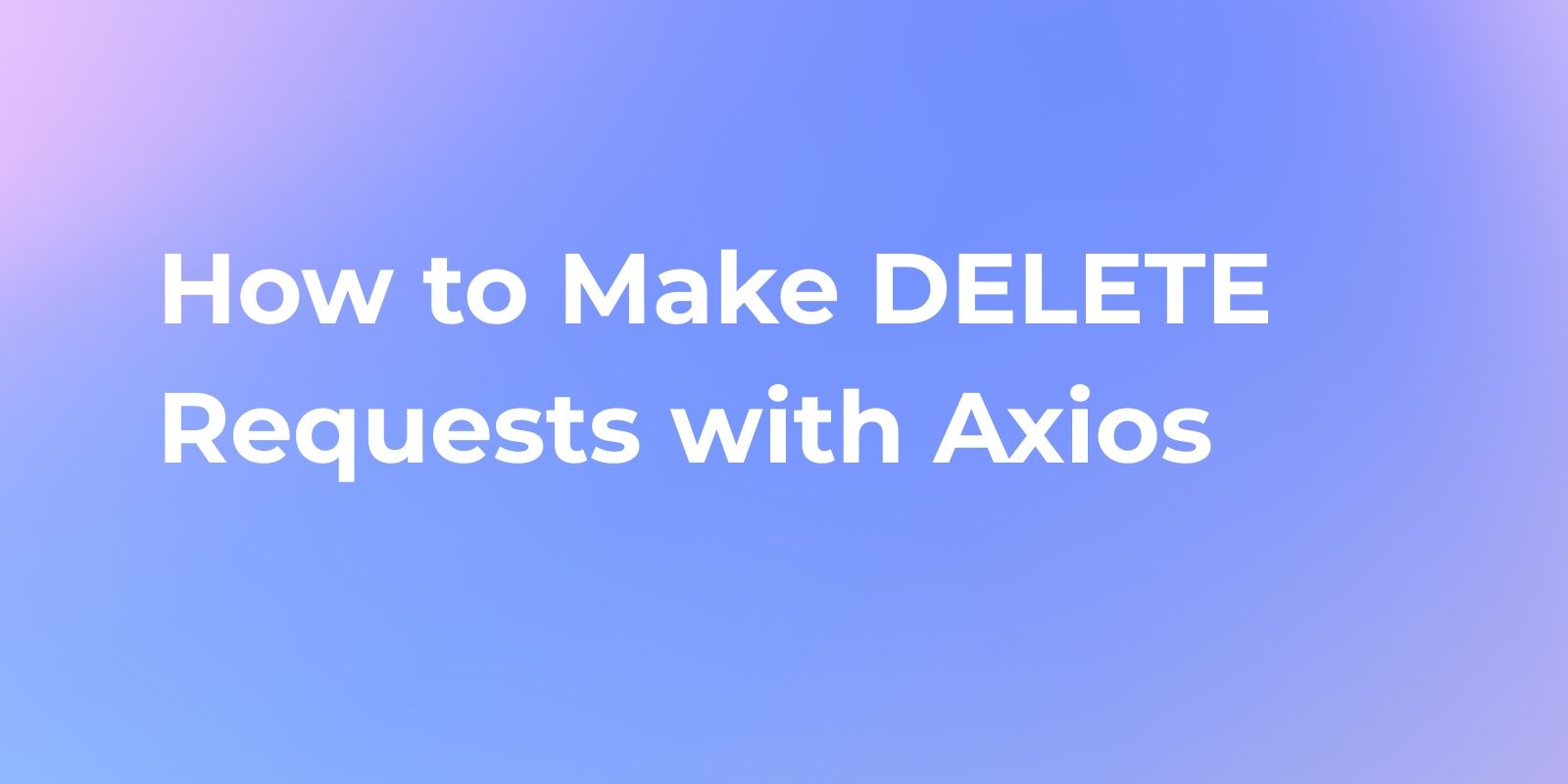
How to Make DELETE Requests with Axios
Axios is a popular HTTP request library that can send asynchronous requests in both browser and Node.js environments. This article will focus on how to use Axios for DELETE requests and explore different ways of passing parameters.

Postman Tutorial: How to Generate Bearer Token in Postman
In today's tutorial, we will delve into the intricacies of setting up tokens in Postman, a crucial step in enhancing the security and consistency of your API interactions.
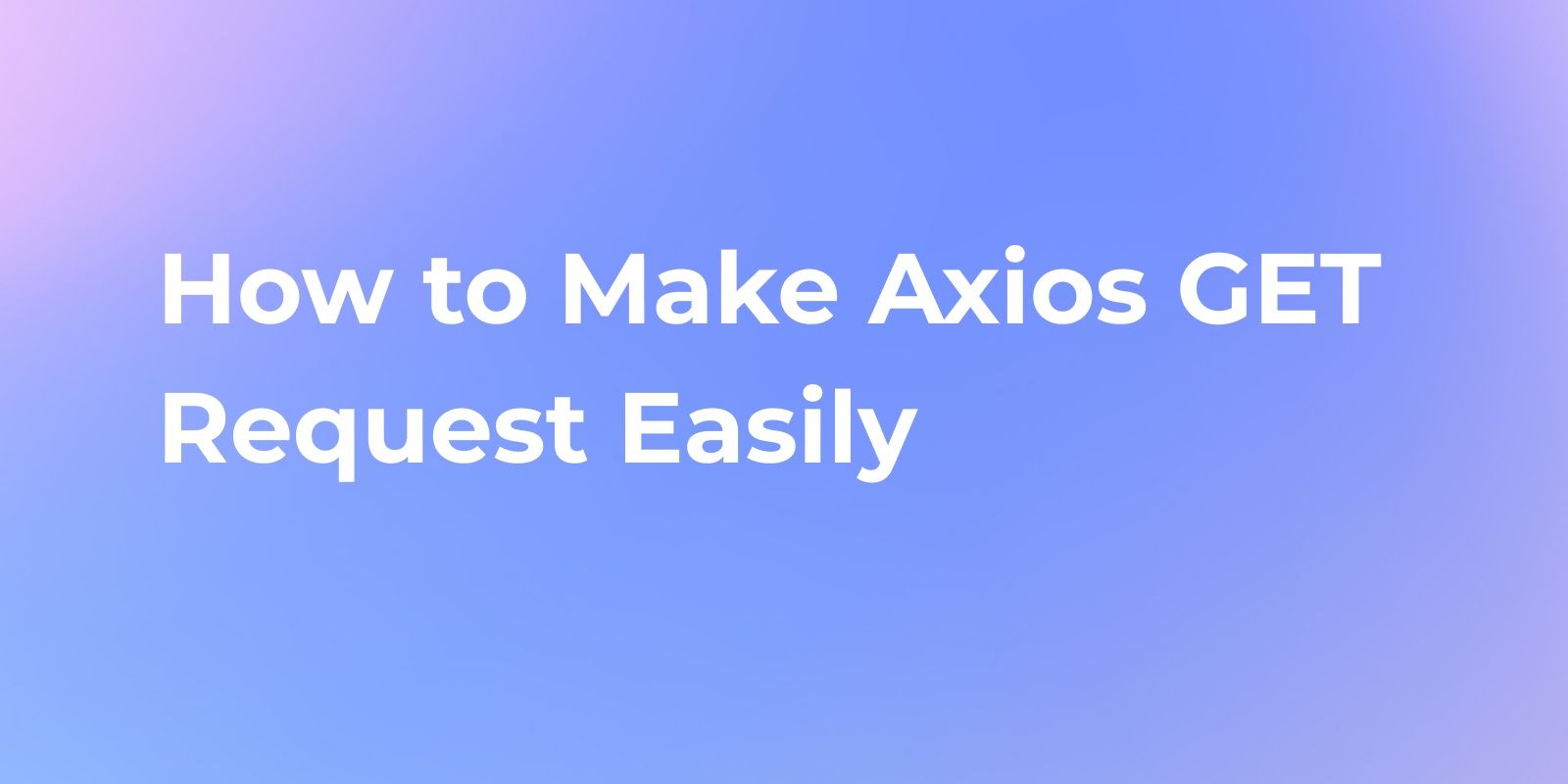
How to Make Axios GET Request Easily
Axios is a JavaScript HTTP client library that is widely used for making API requests when working with JavaScript. In this article, we will provide a detailed introduction to Axios and then show you how to implement GET requests using Axios.

How to Create and Run a WebSocket Server in Python
This article is the ultimate guide on how to create a WebSocket Server in Python and debug it with Apidog easily.

How to Make POST Requests with Axios
Axios stands out as a valuable JavaScript HTTP client library, particularly in facilitating seamless communication with APIs. Given that the POST method is extensively employed in HTTP transactions, mastering its implementation in Axios becomes crucial.

How to Call REST API in Node.JS
In this guide, we'll explore the different methods for calling REST APIs from Node.js applications. We'll go over core concepts, show example code snippets, and provide best practices for working with REST APIs in your Node.js projects.

How to Send Query Parameters in POST Request
Learn the simple and effective way to send query parameters in a POST request with our step-by-step guide. Master the art of sending data efficiently!

How to Send Axios PUT Request
Axios can handle various HTTP methods, including GET, POST, and PUT. In this text, we will focus on the PUT method and introduce how to make PUT requests with Axios.

Sending SOAP Requests with Postman
SOAP is an XML-based communication protocol used for exchanging structured data on the web. This comprehensive article will guide you step-by-step on how to efficiently send SOAP requests using Postman.

How to Send JSON Object with POST Request
In API testing and development, sending POST requests with JSON data is a fundamental skill. A detailed guide is provided for crafting POST requests with JSON payloads within the user-friendly interfaces of both Postman and Apidog.

How to Use Insomnia to Test API
Insomnia is a popular open-source API client that allows developers to easily test and interact with APIs. In this post, we'll dive into what Insomnia is, why developers use it, and how to get started.

How to Generate Bearer Token
Bearer tokens are commonly used in the OAuth 2.0 authentication framework. In this article, we'll explore the process of generating a Bearer token and provide a practical example using GitHub as a reference.

How to Issue and Run HTTPS Requests in Postman
You can use Postman to send requests to web servers using the HTTPS protocol for secure communication. Here are the detailed steps to do it.

How to Add Bearer Token Authorization in Swagger
Bearer token authentication is a common authentication method used to protect access to APIs. Adding a Bearer token to Swagger increases API security and restricts access to protected resources to users with valid access tokens.

How to Set Up Selenium for API Testing(A Step-by-Step )
Ensuring the reliability and functionality of APIs is crucial, and that's where Selenium, a popular tool in the realm of web automation testing, can be a game-changer for API testing as well.

HTTP Request Parameters in REST API
Request parameters allow you to pass data to an API endpoint when making a request. They are an important part of designing and using REST APIs.

How to Install and Run cURL Command on Windows/Mac
Running cURL commands on Windows and Mac is common for network requests and data transfer. This powerful tool supports various protocols. For Windows, install cURL and use it in Command Prompt or PowerShell. On Mac, use the pre-installed cURL in Terminal for seamless operations.

How to Add and Pass Bearer Token in Header
When calling an API that uses bearer token auth, you need to properly format and send the header to pass the token to the API. Here are the steps to set the Authorization header with a bearer token in Apidog.

How to Send JSON Data in Postman
We will delve into the topic of sending JSON data using Postman, a powerful tool for API testing and development. Whether you're a seasoned developer or a newbie, mastering this skill is essential for efficient API testing and development.

How to Export Swagger Documentation to PDF Files
You may find yourself in a situation where you need to export Swagger documentation into PDF or files for convenient sharing and archiving. In this blog post, we will guide you through the process of exporting Swagger documentation into both PDF formats.

How to Use Multithreading in FastAPI?
This article will explore the usage of multi-threading in the FastAPI framework, covering common use cases, problem-solving approaches, and practical examples.

Curl -x Command with Example
The term "curl X" typically refers to using the command-line tool "curl" with the "-X" option to specify the HTTP request method. The "curl" command is a widely used tool for making HTTP requests from the command line.

Postman Tutorial: Export Postman Collections Data
Some developers also switch to another free alternative to Postman. This post focuses on how to export your data, including collections, environments, global variables, and data dumps, in JSON format from Postman.

Best OpenAPI Validator Tools
OpenAPI validator helps ensure the validity and correctness of OpenAPI specifications, preventing errors, inconsistencies, and compliance issues. In this article, we will delve into the world of OpenAPI validators.

How to Use Assert in Node.js
By incorporating assertion statements into their code and writing tests using the assert() function, developers can validate assumptions, detect errors, and improve the quality of their Node.js applications.

How to Use the Event Loop in Node.js?
In this article, we'll take a deep dive into how the event loop works, providing common usage scenarios and methods, as well as practical examples to demonstrate how to effectively utilize the event loop in Node.js.

Online SOAP API Tester
This article explores the pivotal role of online SOAP API testing tools in optimizing the testing process, enabling developers and testers to achieve superior results efficiently.

Curl -i Command
The -i option in the Curl command is a gateway to detailed information about the HTTP response headers. By using this option, users can gain a deeper understanding of the server's response and extract crucial metadata from the HTTP headers.

What is the Difference between anyof and oneof
In Z Schema, specifically in the context of JSON schema validation, "anyOf" and "oneOf" are keywords used to define conditional validation logic.

Curl -h Command
One of the most essential options in the curl toolkit is the -h option, which enables users to manipulate and inspect HTTP headers.

curl -u Command
The curl command, a versatile tool for making HTTP requests, offers the -u option to simplify the process of including user credentials in your requests.
In this article, we'll explore the curl -u command, its syntax, and how it enhances the efficiency of handling authentication.

Curl Command: How to Use Curl-D Option
The '-d' option in the Curl command is used to send data as part of an HTTP POST request. This option allows users to include specific data in the body of the request, enabling the transmission of information to a web server.

How to Use Curl Command in Linux
In this guide, we delve into the intricacies of the curl command, exploring its syntax, options, and practical examples that showcase its versatility in Linux environments.
What Is the curl Command?

SOAP vs REST: What is the Key Differences
SOAP and Rest API have their pros and cons, and knowing the differences between them can help developers and architects determine which architecture to use when building their web-based APIs.

SOAP Tutorial: What Is SOAP Basics
SOAP (Simple Object Access Protocol) is an XML-based protocol used for message exchange over the web. This guide is suitable for beginners.

Swagger Editor Tutorial for Beginners
The Swagger Editor is a specialized integrated development environment (IDE) crafted for the creation and management of APIs. It operates primarily with Swagger/OpenAPI specifications, providing developers with a dedicated space for designing, refining, and documenting APIs.

What is Swagger Codegen
Swagger Codegen is an open-source tool designed for code generation during API development.

How to Send a Curl DELETE Request
Curl can be used to send various types of requests like GET, POST, PUT, DELETE etc. In this article, we will see how to send a DELETE request using cURL.

Top 12 cURL Commands with Examples
cURL offers powerful features for HTTP/HTTPS requests. Ideal for automation, these commands facilitate user authentication, proxy support, and more. This guide will help you learn how to use various options with curl commands.
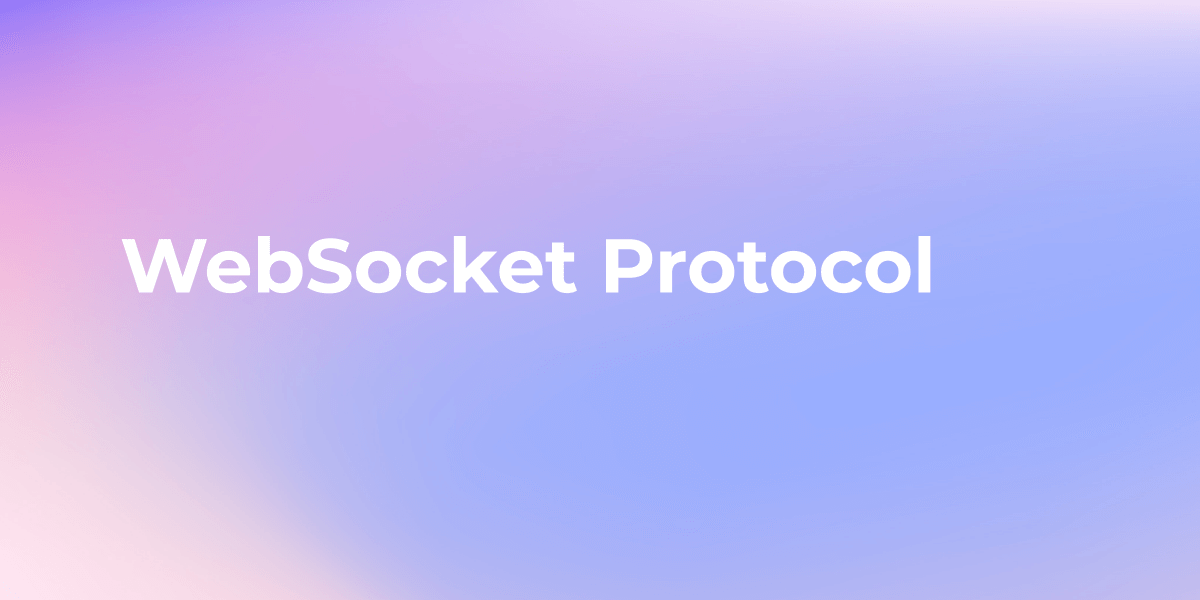
WebSocket Protocol (An Ultimate Guide)
WebSocket is a protocol used to create real-time, bi-directional communication channels in web applications. In this article, we will give an all-around overview of the WebSocket protocol definition, the WebSocket usage situation, and the full process of WebSocket connection.

How to Use Query Parameters in React Router?
In this guide, we will explore the seamless integration of query parameters within React Router. Learn how to efficiently pass and retrieve query parameters in both React Router v5 and the latest version, React Router v6.

How to Mock an API for Testing
Master the art of mock API creation for seamless testing workflows. This guide covers API types, best practices, and a step-by-step setup using Apidog.

CRUD vs. REST: What’s the Difference?
CRUD and REST, often confused, represent key concepts in the API domain. While REST is a popular design style for web APIs, CRUD simply refers to fundamental database operations: Create, Read, Update, and Delete. This article explores the overlap between CRUD and REST.

API Assertions: Ensuring Integration and Performance
Developers define statements or conditions called API assertions to verify an API's functionality. These assertions are checkpoints throughout testing to ensure the API fulfills requirements and operates as intended.

What is X www form URL-encoded Requests
Unlocking the intricacies of data transmission, we delve into the realm of "X www form URL-encoded Requests." In this article, we unravel the significance and application of this encoding method, shedding light on its role in secure and efficient data exchange over the web.

What is Bearer Token and How it Works?
What is Bearer Token? A complete explanation of its details! There are many API authentication methods over HTTP. Bearer Token is one of the most commonly used. In this article, Bearer Token will be fully explained to you.

XML vs JSON: A Comprehensive Comparison of Differences
XML (eXtensible Markup Language) and JSON (JavaScript Object Notation) are both data interchange formats, but they have some key differences. Here are the main distinctions between XML and JSON.

How to Use Talend API Tester: A Comprehensive Guide with Examples
Talend API Tester, formerly known as Restlet Client, is a powerful tool for API testing that can help you validate RESTful APIs or web services easily.

How to Send Authorization Header with Axios
When working with Axios to make HTTP requests, adding an authorization header is a common requirement, especially when dealing with secure endpoints that require authentication. However, sending such headers in cross-origin requests may lead to complications.

What is HTTP Content-Type
Content-Type is essential in HTTP communication to specify the type of data being sent. This article introduces fundamental information about Content-Type, detailing its types and how to specify them when sending requests.

Webhooks vs API: Exploring the Differences
Webhooks and APIs differ in their communication models, with APIs relying on request-response interactions for bidirectional data flow, while webhooks operate in an event-driven manner, providing real-time updates with unidirectional data flow triggered by specific events.

How to Export Insomnia Collection
Insomnia, an open-source desktop application by Kong, stands out as a powerful ally for API design, debugging, and testing. To make the most of your work and ensure seamless collaboration, it's essential to understand how to export Insomnia collections.

How to Use JSON Web Token (JWT) in Node.js
JSON Web Token (JWT) is an open standard that defines a compact and self-contained way for securely transmitting information between parties as a JSON object. This article will provide a quick overview of how JWTs work.

How to Install Django REST Framework
Django Rest Framework (DRF) is a powerful and flexible toolkit for building Web APIs in Django. Here is a step-by-step guide on how to install and configure DRF in your Django project.

How to Test Django REST Framework
Testing is a crucial aspect of web development, ensuring that your Django Rest Framework (DRF) API functions correctly and efficiently. In this guide, we'll walk you through a step-by-step process on how to test Django Rest Framework, covering unit tests, integration tests with Apidog, and more.

What is the Difference between Django and Django REST Framework?
This is where Django Rest Framework (DRF) steps in, adding a layer of specialization for creating RESTful APIs. In this tutorial, we'll explore the distinctions between Django and Django Rest Framework to guide you in choosing the right tool for your web development endeavors.

API Calls: What is an API Call and How to Make it
What is an API Call? An API call refers to the process of a computer program or application making a request to an external service or server, typically through an API (Application Programming Interface).

Best 2 Ways to Build API in node.JS and Express
Node.js is the top choice for developers creating fast web apps with RESTful APIs, widely used in the US. We'll take you through the top two approaches, providing valuable insights and practical guidance on harnessing the power of Node.js and Express to craft efficient and scalable APIs.

How to Create JSON Schema in Python
Python offers several libraries and tools for working with JSON schemas, but one of the most popular choices is the "jsonschema" library. In this guide, we will use this library to create JSON schemas in Python.

How to Send HTTP/2 Request?
In this blog, we'll guide you through the correct way to send HTTP/2 requests, addressing the common misconceptions and challenges you might encounter along the way.

How to Build and Test HTTP API Using Tapir
Tapir, a powerful tool in the Scala programming ecosystem. In this blog post, we will explore how Tapir streamlines the development and testing of HTTP APIs, making the creation of robust and reliable interfaces more accessible than ever.

RAML vs YAML | What Are the Differences?
While RAML and YAML may seem similar and are often used in conjunction, they serve distinct purposes and have their unique features. In this comprehensive blog, we will delve into RAML and YAML, exploring their differences and applications to help you.

What is an API Endpoint?
An API endpoint can be considered a digital gateway or a specific location within an API where requests are received and responses are sent. It serves as the entry point for interaction with an API.
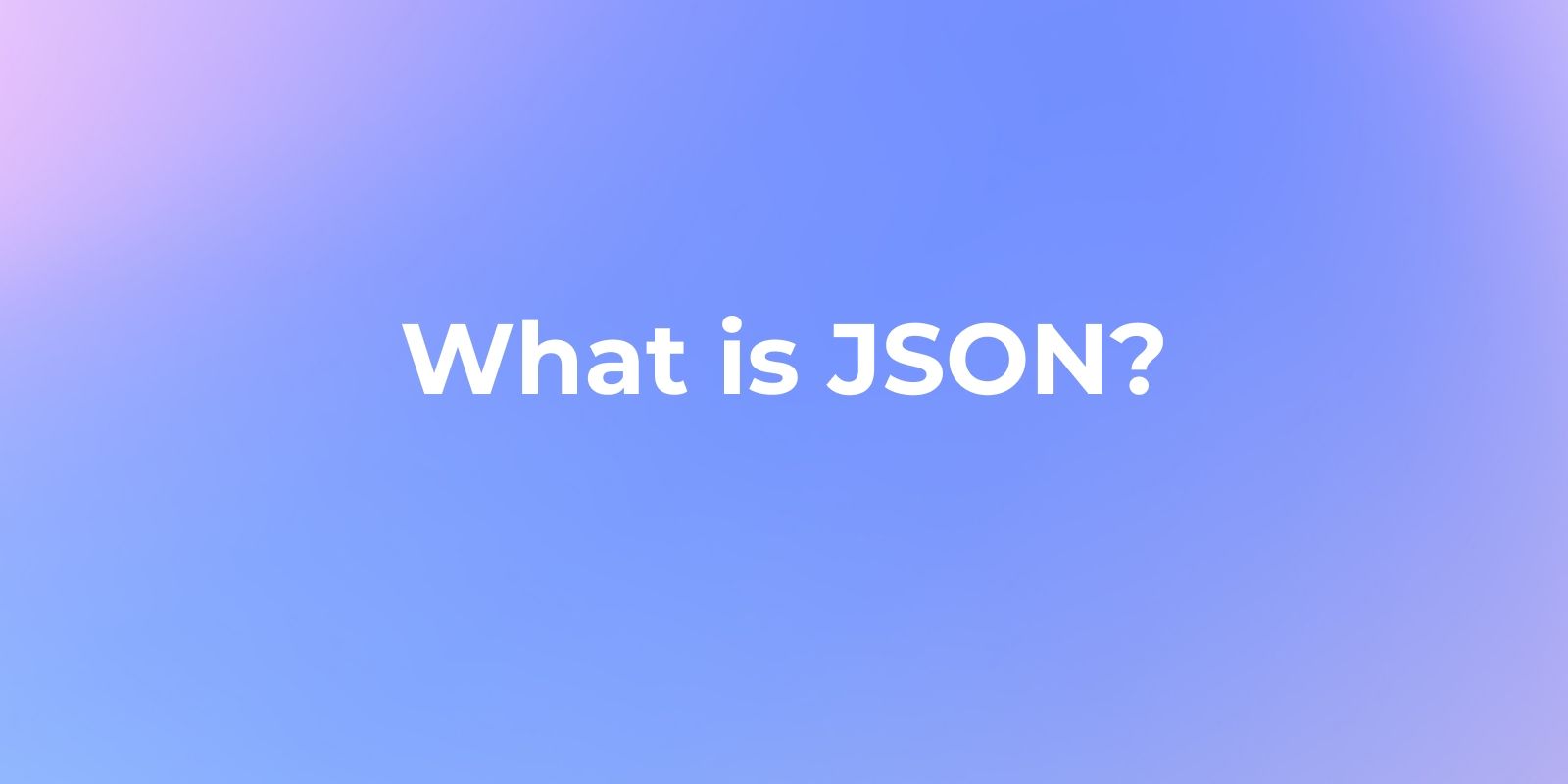
What is JSON? (A Beginner's Guide)
JSON, short for JavaScript Object Notation, is a crucial data interchange format in the world of web development. We'll explore JSON in-depth, covering its syntax, examples, advantages, and best practices.

How Does an API Work with A Database?
Application Programming Interfaces (APIs) play a pivotal role in enabling interaction between software applications and databases, allowing for the retrieval, manipulation, and storage of data. In this post, we will delve deep into the world of APIs and explore how they work with databases.

What is History API
The History API is a feature in HTML5 that allows web developers to manipulate the browser history using JavaScript. It provides methods and properties to interact with the browser's history.

JavaScript - Variables: A Deep Dive
In JavaScript, variables are fundamental building g blocks that allow developers to store and manipulate data. A variable is essentially a named container that holds a value, which can be of various types, such as numbers, strings, objects, and functions.

What is Server-Sent Events (SSE)
In the ever-evolving landscape of web technologies, staying ahead of the curve is crucial. One such technology that has been gaining attention in recent years is Server-Sent Events, often abbreviated as SSE.

API Design First vs. Code First
Design First and Code First are two contrasting strategies that developers employ in the creation of APIs. We will show design first vs. code first, shedding light on their respective advantages, drawbacks, and considerations.

What is Code-First?
In the realm of software development, "Code First" is a groundbreaking approach that's changing the game. In this blog, we'll explore the essence of Code-First, its distinctions from traditional methods, and why it's the choice of modern developers.

Getting Started with RAML: A step-by-step tutorial for beginners
RAML (RESTful API Modeling Language) is a YAML-based language that allows you to describe and document APIs in a clear and concise manner. Understanding the syntax and key components of RAML is essential for beginners to effectively use this powerful tool.

OAuth Grant Types Explained in Detailed
OAuth, the backbone of secure data sharing, operates via "grant types" – routes permitting third-party app access to user resources. This article provides crisp insights into these grant types using real-world examples.

gRPC vs. WebSocket: What is the Difference
In this post, we’ll look at the key differences between gRPC and WebSocket, and provide guidance on when it is better to use each technology. We’ll discuss why gRPC and WebSocket have advantages, and how to decide which is best for your application.

How to Call JSON RPC API (3 Best Ways)
Calling JSON-RPC APIs is a fundamental aspect of modern web development. In this blog, we will explore two of the best methods to call JSON-RPC APIs, providing developers with insights into making seamless and effective API calls.

What is JSON-RPC(Remote Procedure Calls)?
JSON-RPC is a remote procedure call protocol that uses JSON for encoding and is used by many users. So what if you need to send a request or something to test the JSON-RPC API? In this article, we will show you how to send a JSON-RPC API request and validate the response.

Validation vs Verification: What is the Key Difference
Validation and verification are two important concepts in the field of software development. While they may sound similar, they have distinct meanings and purposes. This article aims to explore the concepts of both verification and validation in these fields.

An Ultimate Tutorial of Postman Environment Variables
When using Postman's environment, it is necessary to use something called an environment variable. So what are Postman's environment variables? How do you use it? This article will take a closer look at Postman's environment variables and fully explain how to use them.

How to Use WebSocket Protocol in FastAPI
Explore the capabilities of WebSocket protocol in FastAPI with this easy-to-follow guide. Learn how to leverage real-time, two-way communication for your projects, enabling smoother interactions and seamless data transfer.

How to Use FastAPI APIRouters
In this article, we will dive into the world of FastAPI APIRouters and explore how to use FastAPI APIRouters.
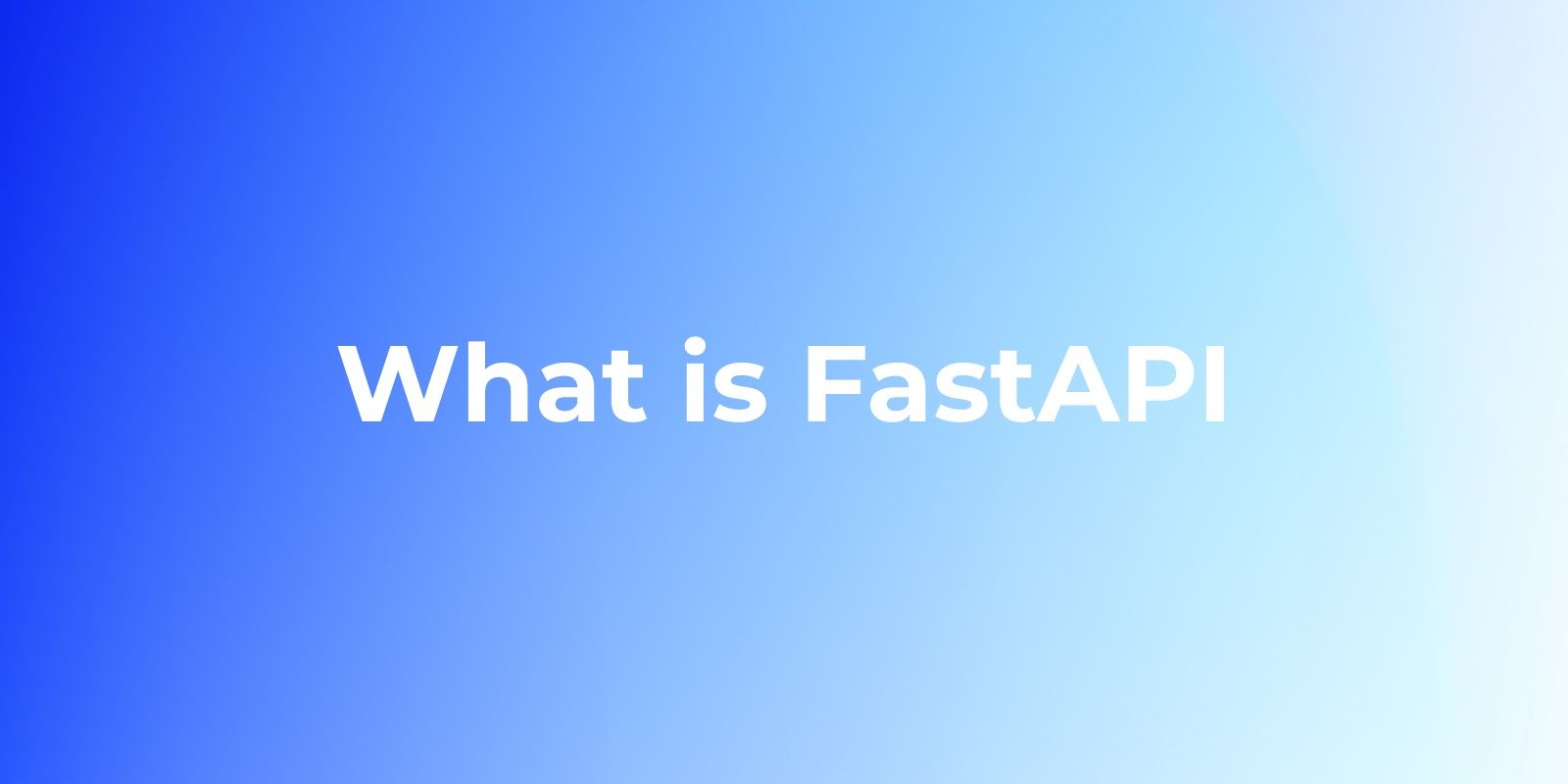
What is FastAPI
FastAPI is a modern, fast (high-performance), web framework for building APIs with Python 3.7+ based on standard Python type hints. It is designed to be easy to use and to provide high performance for building APIs.

How to Export Environments from Postman
In this guide, we'll show you how to export environments from Postman so you can easily import them into Apidog tool.

Claude 2: A New Rival to OpenAI's GPT-4
Claude 2 has the potential to challenge ChatGPT's position. In the following sections, we will discuss what sets Claude 2 apart from its competitors.
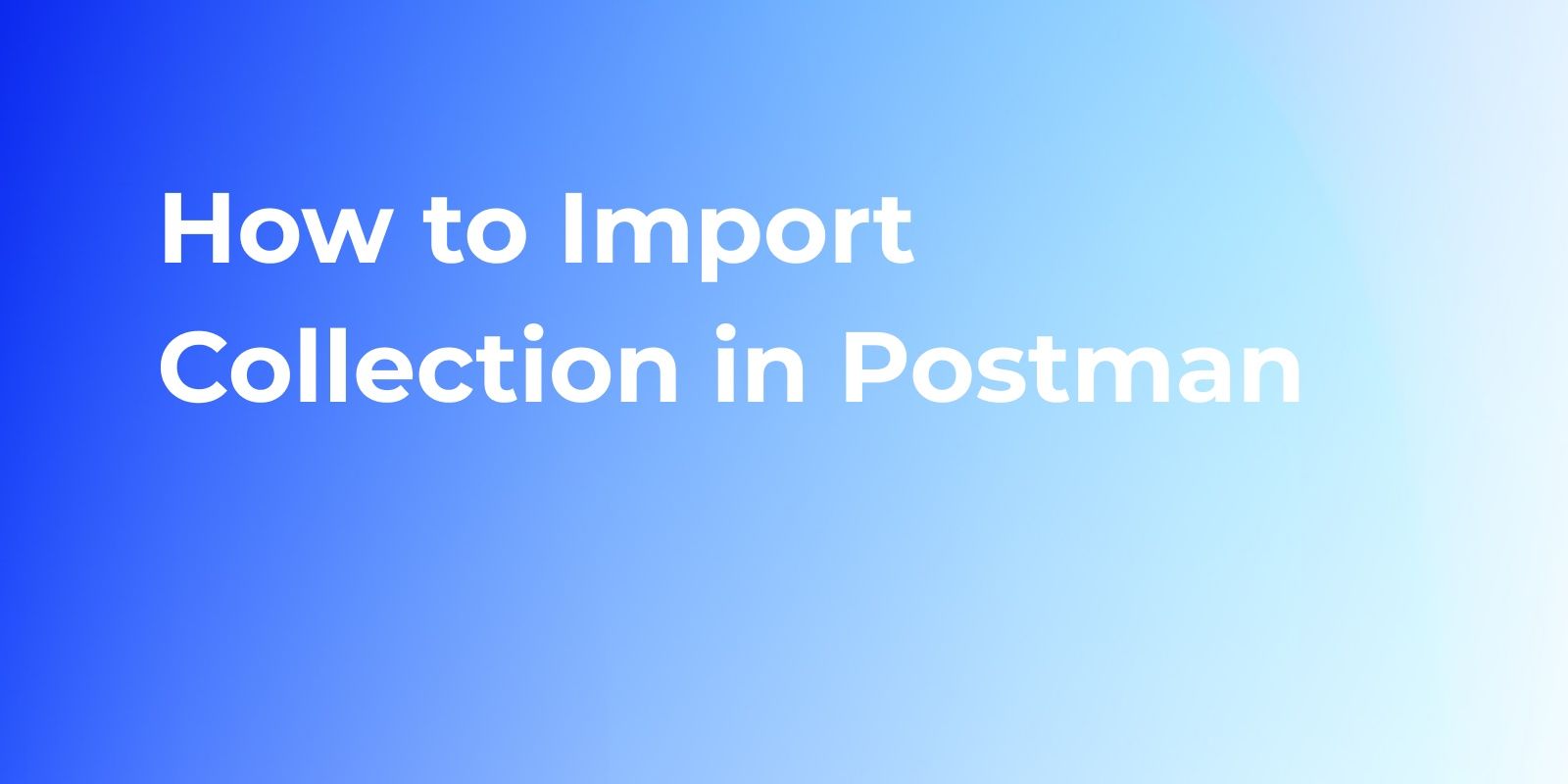
How to Import Collection in Postman
Postman is a wide-used tool for developers to test APs efficiently. If you are new to Postman, you might not quite about API collection transmission. In this article, we will discuss how to import Postman collections.

What Is gRPC? Definition, Architecture, Pros & Cons
gRPC is an open-source Remote Procedure Call (RPC) framework developed by Google. In this article, we will explore its definition, architecture, pros, and cons, and compare it with other RPC frameworks.

gRPC vs GraphQL
Discover the differences between gRPC and GraphQL and find out which API development method is the best fit for your needs. Explore their features, benefits, and use cases to make an informed decision.

Newman vs Postman: Know the Key Differences for API Testing
Newman and Postman are many developers often confused about Postman and Newman. Literally, they are both API development tools, but they serve different purposes.

How to Generate API Documentation in Postman
Postman is a popular API development tool that simplifies designing, testing, and documenting APIs. In this post, we'll explore how Postman documentation can help you create and maintain high-quality API documentation that meets the needs of your users.

Best Practices for API Responses Error Messages
When working with APIs, it is crucial to understand how to interpret the responses and error messages that are returned. This allows developers to effectively troubleshoot and debug their code.

Postman CLI vs Newman
In the realm of API testing and automation, Postman offers two powerful command-line tools: the Postman CLI and Newman. In this article, we'll compare these tools, highlighting their unique features and best use cases.

SOAP and REST API Differences: A Comparison Guide
SOAP and Rest API have their pros and cons, and knowing the differences between them can help developers and architects determine which architecture to use when building their web-based APIs.

What is API Management
What is API Management? API Management is a vital process for managing and securing application programming interfaces.

What is API First? API First Approach
In this article, we will discuss the principles of API First, the API First design considerations, the API First approach, and the API First vs. code-first approach.

The Open API is set as the Standard for ChatGPT Plugins
ChatGPT now supports Plugin capabilities. When interacting with ChatGPT in natural language, users can choose to use plugins.

How to Integrate Swagger UI with gRPC
What is gRPC? Are you looking to integrate Swagger UI with gRPC? Here is a step-by-step guide to tell you.

Web Service Differences Between REST and RPC
Today, we will individually introduce the concepts and characteristics of REST and RPC, and then analyze the differences between REST and RPC from various perspectives.

20 Best Postman Alternatives for API Testing and Development
Postman is a leading tool for API testing and development, but it's not the only option available. Here, we present the 20 best Postman alternatives, highlighting their key features, pros, cons, websites, and pricing.

Software Performance Testing: Overview & Top Tools
Software performance testing is a crucial aspect of software development that ensures the optimal performance of software apps. Here are the best performance testing tools.

The Differences Between Postman and JMeter
Postman and JMeter are both widely used tools in the field of software testing, but they serve different purposes and have distinct features.

Pytest Tutorial: API Automated Testing Framework
What is Pytest and how does it work? Pytest is a Python testing framework for writing and executing various software tests.

5 Best API Hub Platforms for Seamless Integration (Update)
This article will introduce five practical API hubs to assist developers in finding the most suitable option.

JavaScript Online Debugging Front-end Beginner's Guide
This article provides an introduction to the basic process, common problems, and errors in JavaScript online debugging, and includes code examples for illustration.

What is SoapUI
SoapUI is an open-source tool for testing and debugging web services and APIs. It is specifically designed for testing web services and RESTful APIs that operate within a client/server architecture.

The Differences Between SOAP and HTTP
Explore the variances between SOAP and HTTP, including data exchange formats and request handling. Learn about their features, applications, and implications for web communication.

How to Execute SSH Commands Using WebSocket
How to execute SSH commands using WebSocket? You can install an SSH plugin in Drone and use WebSocket to send commands to SSH.

How to Write Automated Test Scripts (Best 2 Ways)
This article will introduce 2 great ways to guide you on how to write automated testing scripts. Let's get it.

Robot Framework: API Automation Testing
RobotFramework-based interface automation testing is an essential tool to improve testing efficiency and quality. In this article, we will define RobotFramework, explain how to install RobotFramework, etc.

Performance Testing Guide: All You Need to Know
Looking to learn more about performance testing? This comprehensive guide has got you covered! From the basics to advanced concepts, we cover everything you need to know to get started with performance testing.

Postman Tutorial: How to Test APIs Effectively
Using Postman, this tool makes it easy to perform API testing. Here is a simple tutorial to help you get started quickly.

Functional Testing vs Automated Testing
This article is an introduction to functional testing and automation testing, with definitions, pros and cons, and other details.

3 Best Automated Testing Platforms of 2025
This article will introduce the top 3 automated testing platforms, and talk about their features and advantage.

A Guide to Front-End Automated Testing
This article will take you through how to use automated testing to improve the reliability and efficiency of your front-end code.

Getting Started on API Automation Testing Framework
This article provides you with a comprehensive learning guide on interface automation testing frameworks to help you get started quickly and build an efficient testing tool.

What is Automated Testing (A Step-by-Step Guide)
This article introduces the concept of automated testing and a detailed guide to doing it. Automated testing can help you save time and cost.

What Is UI Automated Testing
This article will delve into the principles and methods of UI automation testing to help you understand how to use UI automation testing to improve the efficiency and quality of software testing.

API Mocking in Postman v.s. Apidog: Which is Better?
API mocking is essential for testing during early development. While Postman and Apidog both offer mocking, Apidog excels with user-friendly features like Smart Mock and Advanced Mock, supporting realistic and customized testing. Discover how each tool approaches mocking to streamline development.

Exploring the OpenAI ChatGPT Plugin's Application Scenarios
The ChatGPT plugin is an AI-powered tool that can help you efficiently handle customer service, marketing, and other business tasks. This article will introduce several creative use cases to bring more value to your business.
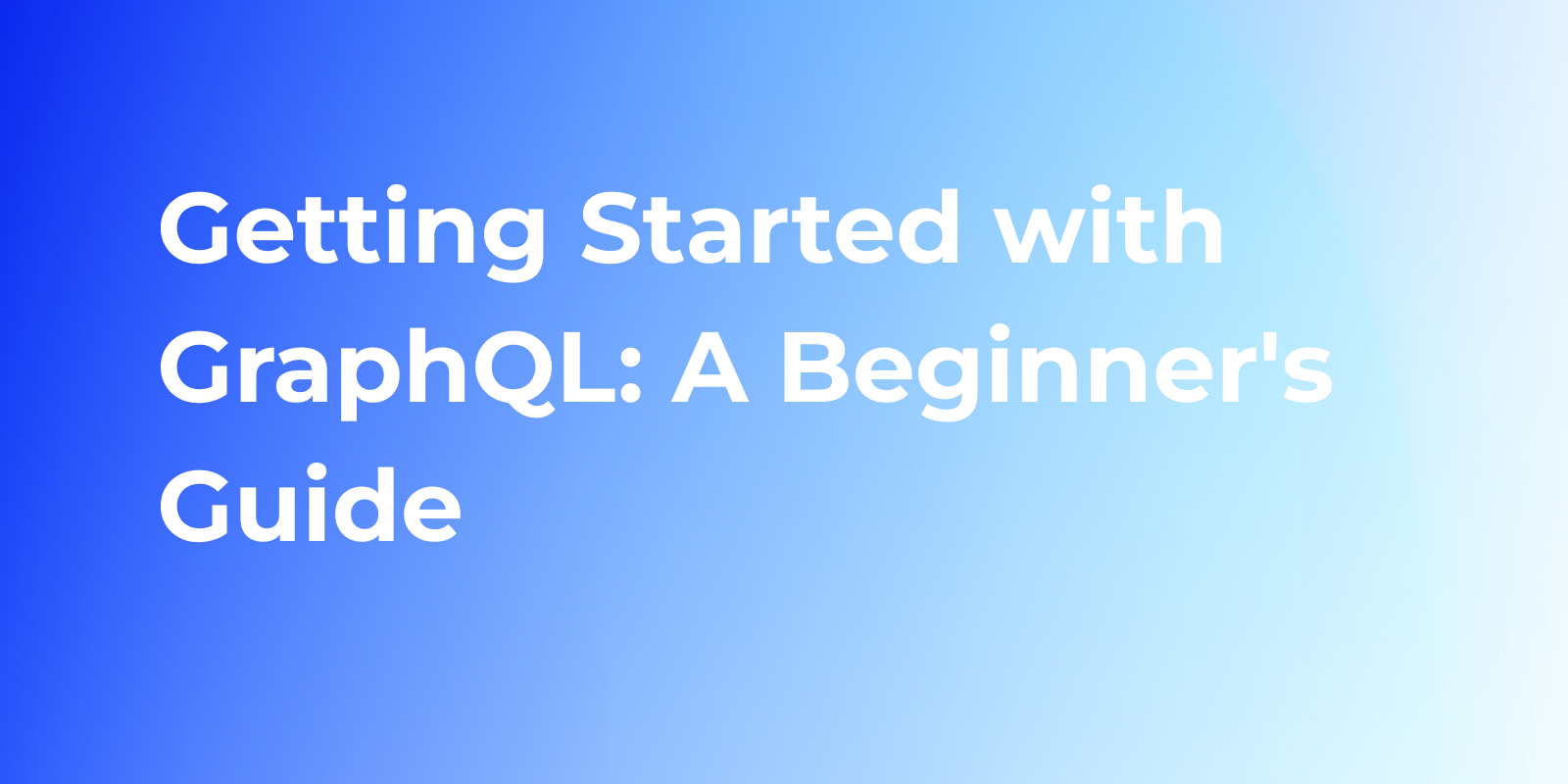
Getting Started with GraphQL: A Beginner's Guide
This article introduces the basic concepts and advantages of GraphQL to help readers understand and master the basic use of GraphQL.

Best Test Automation Frameworks List
This article will provide a comprehensive introduction to automation testing frameworks, including basic concepts and benefits so that you can quickly master the automation testing framework knowledge.

Mock.js Syntax Specification
Introduction to the syntax specification of Mock.js, which is divided into two parts: the definition specification of data templates and the definition specification of data placeholders. This will help you better use Mock.js to simulate data and improve development efficiency.

How to Use Mock.js in Vue.js
There are two ways to think about using Mock.js in your Vue project, and if you want to learn how to optimize your Vue.js front-end development process using Mock.js, then this article is a good place to start.

Step-by-Step Guide to Mastering Mock APIs with Apidog
API Mock is a technique that replaces the real API interface with simulated data. With Apidog, it only takes 3 steps to set up a Mock API.

What Is RESTful API
A REST API is an application programming interface (API or Web API) that follows the REST architecture specifications and supports interaction with RESTful web services. REST stands for Representational State Transfer, initially proposed by computer scientist Roy Fielding.

8 Best API Interface Documentation Management Tools
This article will list common API management tools on the market. Reading this article may help you find a handy API interface management tool.

A Beginner's Tutorial on Mock Syntax
Mock is a JavaScript library that generates random data and intercepts Ajax requests. This post will show you the common syntax of Mock, including generating random data, simulating data templates, and mocking APIs.

API Mocking: Common Use Cases
Discover how Mock APIs enhance development by simulating backend behavior, reducing dependencies, and handling edge cases. Learn key use cases like front-end development and testing specific scenarios, and explore how tools like Apidog simplify the process for faster, more efficient workflows.

What Is Mock and Specific Scenarios for Using Mock
Mock is a testing technique used in software development to mock up a fake implementation of a feature for testing and debugging while the actual code is still unimplemented.

What Is the Difference Between an API & API Documentation
APIs and API documentation are both relevant to software development, but they serve different purposes. Understanding the difference between the two can help developers use them better and write quality code more easily.

How to Write a Standard API Document
Basic elements for writing excellent API documentation include document structure, API design, example code, etc. With this article, learn how to write a high-quality API documentation.

How to Read and Understand Common API Documentations
Interface documentation is an essential part of the software development process, but sometimes interface documentation can be confusing, and this article helps you better read and understand an interface document.

Who should Write the API Documentation
Writing interface documentation is a crucial step in the API development process, and it has a significant impact on subsequent tasks such as development, testing, and documentation writing.

How to Design a Standard API Interface Documentation
In this post, you will learn the key steps and best practices for designing comprehensive API interface documentation for yourself.